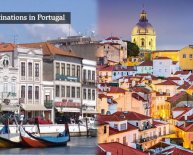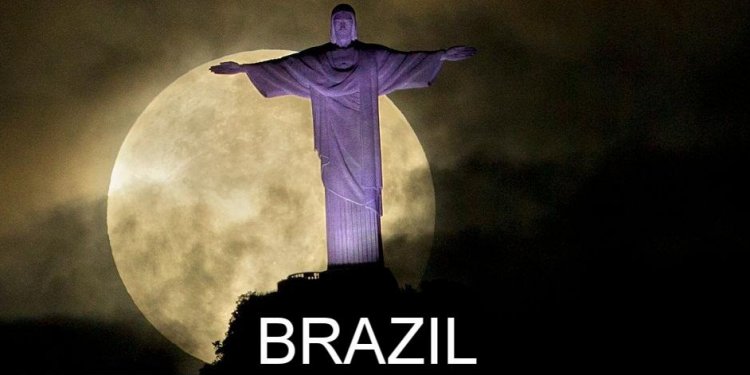
Tourist destinations in Brazil
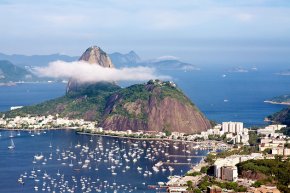
1 Sugar Loaf
Rio de Janeiro's best-known landmark is the rock peak of Sugar Loaf, towering 394 meters above the harbor. It sits on a point of land that projects out into the bay and wraps around its harbor, and is connected to the city by a low strip of land. You can take a cable car from Praça General Tibúrcio to the top of the Morro da Urca, a lower peak from which a second cableway runs to the summit of the Sugar Loaf. From here, you can see the entire mountainous coast that rings the bay and its islands. Below, the 100-meter Praia da Urca beach is near the location of Rio's original nucleus, between the Morro Cara de Cão and the Sugar Loaf. On Cara de Cão are three forts, of which the 16th-century star-shaped Fort São João is open to the public.
2 Cristo Redentor (Christ the Redeemer)
Cristo Redentor (Christ the Redeemer)
The giant statue of Christ overlooking the city from the 709-meter summit of Corcovado is almost as widely recognized a symbol of Rio as the distinctive shape of Sugar Loaf. The world-famous landmark was erected between 1922 and 1931, financed almost entirely by contributions from Brazilian Catholics.
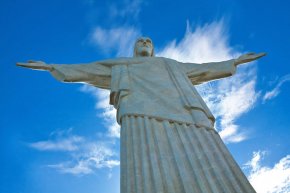 The Art Deco statue was created by Polish-French sculptor Paul Landowski and built by the Brazilian engineer Heitor da Silva Costa, in collaboration with the French engineer Albert Caquot. Made of reinforced concrete and soapstone, the figure itself is 30 meters tall with arms stretching 28 meters; it weighs 635 metric tons. Inside its eight-meter-high base is a chapel, where it's not uncommon to find weddings and baptisms taking place. The Corcovado rack railway chugs from Rua do Cosme Velho up the 3.5-kilometer track to the statue, through the Tijuca National Park.
The Art Deco statue was created by Polish-French sculptor Paul Landowski and built by the Brazilian engineer Heitor da Silva Costa, in collaboration with the French engineer Albert Caquot. Made of reinforced concrete and soapstone, the figure itself is 30 meters tall with arms stretching 28 meters; it weighs 635 metric tons. Inside its eight-meter-high base is a chapel, where it's not uncommon to find weddings and baptisms taking place. The Corcovado rack railway chugs from Rua do Cosme Velho up the 3.5-kilometer track to the statue, through the Tijuca National Park.
3 Carnaval (Carnival)
One of the world's most famous pre-Lenten celebrations - as well-known as those in Venice and New Orleans - takes place each winter in Rio de Janeiro. The celebrations begin shortly after New Year, but the splendor and extravagance reaches its spectacular climax in the four days before Ash Wednesday, attracting hundreds of thousands of spectators to its street parades, samba parties, and shows. Other Brazilian cities celebrate Carnaval; it is also a major tourist event in Bahia and Recife, but Rio's is the most lavish.
 The most spectacular events are the parades of the samba schools, which are held in a unique venue designed by renowned Brazilian architect Oscar Niemeyer. The Sambódromo is a long parade route lined by stadium-style boxes designed so that up to 50, 000 spectators can watch the parades of brilliantly costumed dancers as they compete. The parade route is 700 meters long and 13 meters wide. It was first used in 1984 and updated as a venue for the 2016 Olympic Games.
The most spectacular events are the parades of the samba schools, which are held in a unique venue designed by renowned Brazilian architect Oscar Niemeyer. The Sambódromo is a long parade route lined by stadium-style boxes designed so that up to 50, 000 spectators can watch the parades of brilliantly costumed dancers as they compete. The parade route is 700 meters long and 13 meters wide. It was first used in 1984 and updated as a venue for the 2016 Olympic Games.
Address: Rua Marquês de Sapucaí, Rio de Janeiro
4 Copacabana
Few cities are blessed with a beautiful sand beach at its heart, let alone one that stretches four kilometers along one entire side of its downtown. A few steps from its golden sands are Avenida Atlântica, Avenida Nossa Senhora de Copacabana, and the neighboring smaller streets where you'll find appealing century-old buildings, fine hotels, and popular restaurants and cafés. The unquestioned monarch of the area, and of Rio hotels, is the renowned Copacabana Palace, built in the 1920s and now protected as a national monument.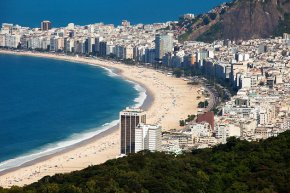 Featured in the 1933 film Flying Down to Rio and host to royalty and glamorous movie stars, Copacabana Palace recalls the halcyon days of power, wealth, and elegance, when Rio was capital of Brazil.
Featured in the 1933 film Flying Down to Rio and host to royalty and glamorous movie stars, Copacabana Palace recalls the halcyon days of power, wealth, and elegance, when Rio was capital of Brazil.
At the far end of the beach, Copacabana Fort dates from 1914 and was the scene of a 1922 revolt of officers, who took over the fort and turned its artillery on the city. The short-lived revolt ended the next day when the government brought in battleships to bombard the fort. You can learn about this and other military history at the Museu Histórico do Exército (Museum of the History of the Army) now housed here. Outside, on the fort grounds, are artillery pieces from the late 19th and early 20th centuries.
Address: Praça Coronel Eugênio Franco, Rio de Janeiro
Rio Copacabana Map
5 Tijuca National Park
Tijuca National Park protects the Tijuca Forest and several viewpoints overlooking the city, and surrounds Cristo Redentor, the giant-sized statue of Christ on Corcovado. To explore the park, you can leave the train up to Corcovado at a midpoint and follow the road through the forest. The 3, 300-hectare Tijuca Forest, one of the world's largest forests within a city, was planted in the late 1850s on land that had been destroyed by coffee plantations, to safeguard the springs that supplied Rio de Janeiro's water. Most of the trees are native species and provide habitat for Capuchin monkeys, quatis (Brazilian raccoon), colorful toucans, hawks, brilliant blue butterflies, and many other species of wildlife, which you may spot while exploring its trails and roads.







